Dipping a Toe in Jupiter’s Atmospheric ‘Oceans’ and Polar Cyclones
Jan 07, 2022 — Atlanta, GA
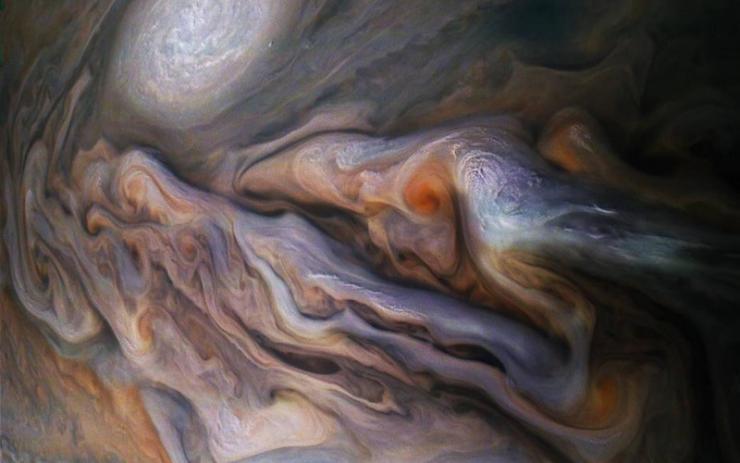
Enhanced Image by Gerald Eichstädt and Sean Doran (CC BY-NC-SA)/NASA/JPL-Caltech/SwRI/MSSS
Press release led by Scripps Institution of Oceanography.
Hurtling around Jupiter and its 79 moons is the Juno spacecraft, a NASA-funded satellite that sends images from the largest planet in our solar system back to researchers on Earth. These photographs have given oceanographers — including a professor with the School of Earth and Atmospheric Sciences — the raw materials for a new study published today in Nature Physics that describes the rich turbulence at Jupiter’s poles and the physical forces that drive the large cyclones.
“It's really the first modern mission to understand the origin and evolution of Jupiter,” says Annalisa Bracco, who studies ocean and climate dynamics and is one of 11 scientists who contributed to the study. “Jupiter’s poles were never observed before with this clarity. We had no idea that there were cyclones organized in structures, with a central one and five or seven around it. I think so far some key discoveries are related to the structure of Jupiter’s atmosphere.”
The study’s lead author, Lia Siegelman, a physical oceanographer and postdoctoral scholar at Scripps Institution of Oceanography at the University of California San Diego, decided to pursue the research after noticing that the cyclones at Jupiter’s pole seem to share similarities with ocean vortices she studied during her time as a Ph.D. student. Using an array of these images and principles used in geophysical fluid dynamics, Siegelman, Bracco, and their colleagues provided evidence for a longtime hypothesis that moist convection — when hotter, less dense air rises — drives these cyclones.
“When I saw the richness of the turbulence around the Jovian cyclones with all the filaments and smaller eddies, it reminded me of the turbulence you see in the ocean around eddies,” Siegelman says. “These are especially evident on high-resolution satellite images of plankton blooms, for example.”
In addition to Siegelman and Bracco, the study’s collaborators include scientists from the University of California San Diego, the California Institute of Technology, and Italy’s main space sciences research organization, Istituto Nazionale di AstroFisica — Istituto di Astrofisica e Planetologia Spaziali.
A last-minute invite to Rome to study Jupiter
Two years after Juno arrived at the Jovian system in 2016, Bracco was in Rome for a meeting with the researcher who led the development of the infrared imaging equipment and spectrometers onboard the NASA spacecraft. “I was not supposed to be at that small meeting, but someone who was invited could not make it and asked me to take his place at the last minute,” Bracco says.
It was then that she saw some early images from Jupiter’s poles and was asked how eddies — circular currents of water — could form there. “I noticed that the characteristics of the turbulence looked like the kind we see at the ocean's surface on Earth. I had my computer and was able to pull up a couple of figures obtained with the models I run for the ocean.”
Bracco, the Juno imaging researcher, and other colleagues published research in 2020 based on those early findings, “making that connection and the hypothesis that something similar to the so-called submesoscale (eddies) turbulence observed in the ocean was at work also on Jupiter.”
Bracco says Siegelman was able to prove that hypothesis with in-depth analysis of more recent Juno data and has since shown that the turbulence on Jupiter transfers energy to the larger cyclones “that are very stable, and most likely very deep. In other words, the density structure of the Jupiter atmosphere must resemble that of the ocean with a 'mixed-layer' on top and a much deep and denser layer underneath. The large cyclones reach or occupy the layer underneath, the 'smaller' turbulence does not and is convective,” or transfers heat via fluid motion.
The Jovian-Earth connection
Siegelman says that understanding Jupiter’s energy system, a scale much larger than Earth’s, could also help us understand the physical mechanisms at play on our own planet by highlighting some energy routes that could also exist on Earth.
“To be able to study a planet that is so far away and find physics that apply there is fascinating,” she said. “It begs the question, do these processes also hold true for our own blue dot?”
Juno is the first spacecraft to capture images of Jupiter’s poles. Previous satellites orbited the equatorial region of the planet, providing views of the planet’s famed Red Spot. In addition to the infrared camera systems that provided the data Bracco saw in Rome in 2018, Juno is also equipped with a system for visible light images.
Siegelman and colleagues analyzed an array of infrared images capturing Jupiter’s north polar region, and in particular the polar vortex cluster. From the images, the researchers could calculate wind speed and direction by tracking the movement of the clouds between images. Next, the team interpreted infrared images in terms of cloud thickness. Hot regions correspond to thin clouds, where it is possible to see deeper into Jupiter’s atmosphere. Cold regions represent thick cloud cover, blanketing Jupiter’s atmosphere.
These findings gave the researchers clues on the energy of the system. Since Jovian clouds are formed when hotter, less dense air rises, the researchers found that the rapidly rising air within clouds acts as an energy source that feeds larger scales up to the large circumpolar and polar cyclones.
Juno provides scientists with the first look at these large polar cyclones, which have a radius of about 1,000 km (roughly 620 miles.) There are eight of these cyclones occurring at Jupiter’s north pole, and five at its south pole. These storms have been present since Juno started sending back images five years ago. Researchers are unsure how they originated or for how long they have been circulating, but they now know that moist convection is what sustains them. Researchers first hypothesized this energy transfer after observing lightning in storms on Jupiter.
Juno will continue orbiting Jupiter until 2025, providing researchers and the public alike with novel images of the planet and its extensive lunar system.
Siegelman’s work is funded through the Scripps Institution of Oceanography Postdoctoral Program. Other funding organizations for the study include NASA’s Jet Propulsion Laboratory (JPL), the National Science Foundation (NSF) and Agenzia Spaziale Italiana (Italian Space Agency).
DOI: 10.1038/s41567-021-01458-y
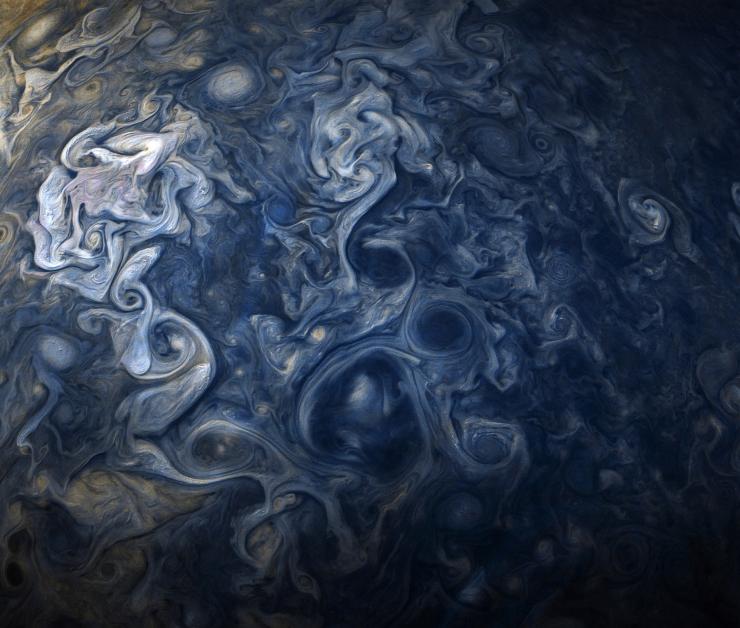
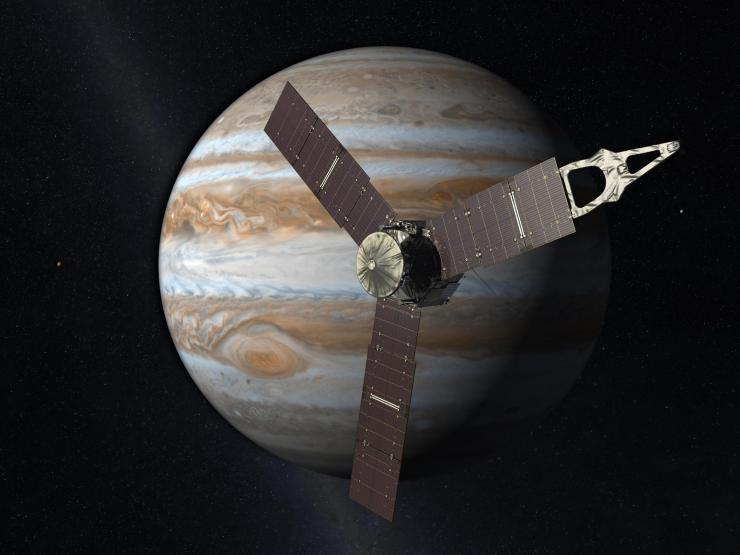
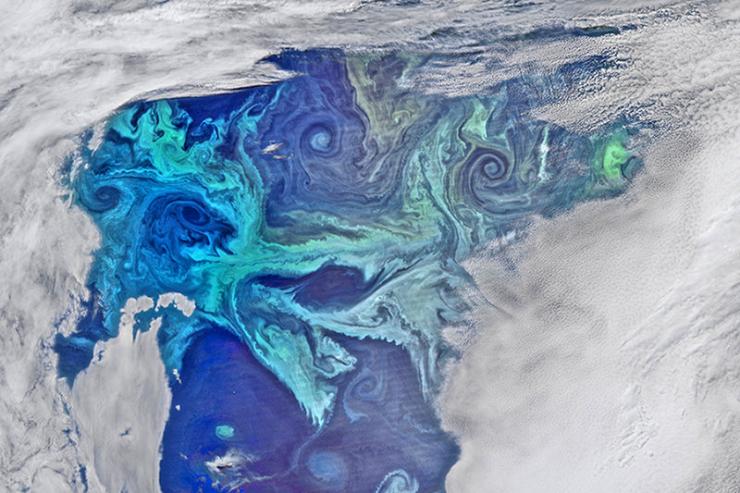
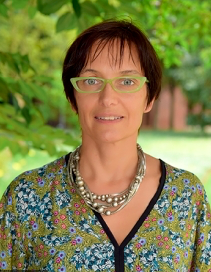
Press and Media: Scripps Communication Office
Georgia Tech contact:
Renay San Miguel
Communications Officer II/Science Writer
College of Sciences
404-894-5209
Editor: Jess Hunt-Ralston




